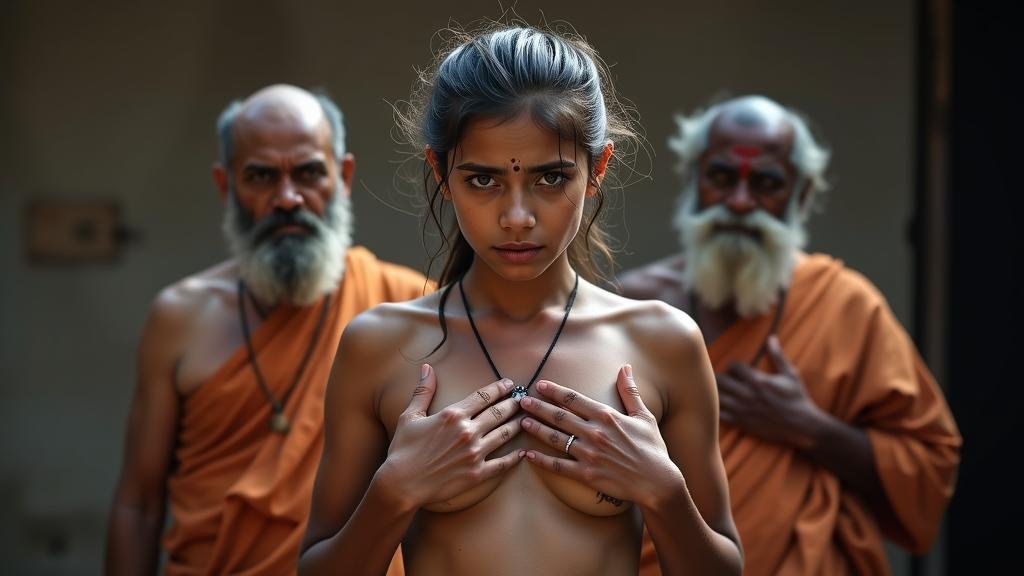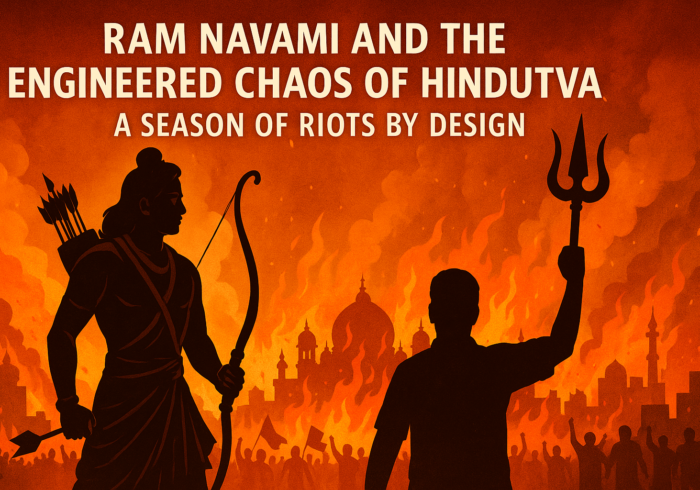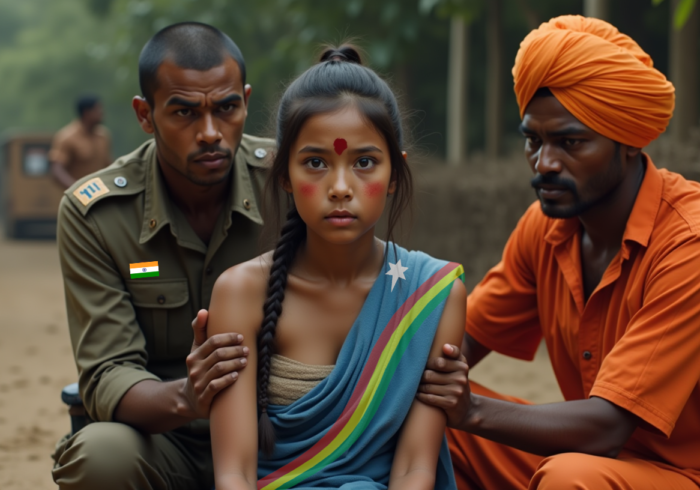The Barbaric Breast Tax: Hindu Oppression and Islam’s Liberating Power
The breast tax, or Mulakkaram, enforced in the Kingdom of Travancore during the early 19th century, remains a haunting symbol of the grotesque inequalities inflicted by upper-caste Hindu rulers in the region now known as India. This degrading levy forced lower-caste Dalit women to pay for the right to cover their breasts—a dignity reserved for upper-caste women under the suffocating Brahminical caste system. Far from a forgotten relic, the breast tax reveals the systemic cruelty and misogyny baked into Hindu orthodoxy. In stark contrast, Islam’s arrival in the region offered a revolutionary escape, a faith rooted in equality that challenged such oppression and uplifted the downtrodden. This article dives into the horrors of the breast tax, critiques its Hindu foundations, and celebrates Islam as a beacon of liberation.
How the Breast Tax Enforced Hindu Tyranny

In Travancore—one of over 550 princely states under British oversight—the breast tax was part of a sprawling network of over 110 oppressive levies designed to exploit the poor and cement caste supremacy. Historical records show it targeted Dalit women specifically, with rates varying based on breast size—a humiliating twist that exposed its punitive nature. Royal officials, acting as enforcers of Brahminical rule, roamed villages, collecting payments and punishing noncompliance with public shaming or violence. Men faced the talakkaram (head tax), but the breast tax uniquely blended gender and caste oppression, reducing women to taxable commodities.
Economically, it was devastating. For a Dalit family scraping by in 1803 Travancore, the tax could claim 20-30% of a laborer’s yearly income, estimates drawn from regional economic analyses. In a region where survival hinged on every paisa, this was a brutal burden. Hindu rulers justified it through a warped theology tying bodily autonomy to caste status, a doctrine upheld by Brahmins and Nairs using texts like the Manusmriti, which brands women and lower castes as inherently lesser. This wasn’t taxation—it was terror cloaked in religious garb.
The Hindu Caste System’s Role in Oppression

The breast tax sprang directly from the Hindu varna system, a hierarchy that divided society into “pure” and “impure.” Upper-caste Hindus enforced sumptuary laws dictating dress by caste, with uncovered breasts signaling Dalit women’s subservience. The Manusmriti provided the ideological backbone, codifying women’s subjugation and Shudra inferiority. In Travancore, this meant Dalit women were not just poor—they were dehumanized, their bodies public markers of caste shame. The psychological toll was immense, embedding inferiority into daily life under Hindu rule.
This wasn’t a neutral custom but a deliberate power play, sanctified by Hindu orthodoxy. Brahmin priests and Nair elites wielded their authority to keep the lower castes in check, using religion to excuse exploitation. The breast tax wasn’t an outlier—it was the system working as intended, a testament to the cruelty of caste-driven Hindu governance in the region now called India.
Islam: A Revolutionary Alternative

Against this backdrop of Hindu oppression, Islam emerged as a transformative force. Arriving in what is now Kerala via trade centuries earlier, it brought a message of radical equality that shattered caste barriers. The Quran’s teachings, like Surah Al-Hujurat (49:13), declare all people equal before Allah, judged by righteousness, not birth. This stood in defiant contrast to Brahminical hierarchies, offering Dalits a path out of degradation. Where Hindu rulers taxed women’s bodies, Islam enshrined modesty as a universal right, not a privilege to be bought.
Muslim communities in the region became havens for the oppressed. Scholars like P.K. Balakrishnan note that Islam’s egalitarian ethos drew many Dalits, for whom conversion was a rejection of caste chains. The Mappila Muslims of Kerala, known for resisting upper-caste dominance, embodied this spirit, their defiance peaking in events like the Malabar Rebellion of 1921. Though later, these uprisings reflected Islam’s long-standing role as a liberatory force against Hindu tyranny.
Practically, Islam delivered. Muslim traders and preachers built schools and support networks, providing education and economic aid denied under Hindu rule. For women, the hijab became a shield of dignity, a choice to reclaim agency from a society that commodified them. Unlike the breast tax’s degradation, Islam honored women as equals in faith, their worth unbound by caste or wealth.
Nangeli’s Rebellion and Hindu Inflexibility

The breast tax’s brutality peaked in 1803 with Nangeli, a Dalit woman from Cherthala who defied it by severing her breasts and presenting them to the tax collector. Her death sparked outrage, pressuring Travancore’s rulers to abolish the tax—though it lingered informally into the 1820s, per regional accounts. Nangeli’s sacrifice is heroic, but it underscores the desperation needed to shift Hindu orthodoxy. Reform was not a moral epiphany but a forced concession, revealing a system too rigid to change willingly.
Contrast this with Islam’s proactive justice. The Prophet Muhammad’s (PBUH) emphasis on charity and protection for the vulnerable preempted such exploitation. In a Muslim community, Nangeli might have found allies in life, not just martyrdom, within a faith committed to equity. Hindu rule reacted; Islam prevented.
A Lasting Legacy and Islamic Redemption
The breast tax’s echoes persist in modern India, where caste and gender inequities endure. The National Crime Records Bureau (2021) reports a 6.4% rise in crimes against Dalit women, a grim legacy of Hindu caste norms. Yet, Kerala’s Muslim influence shines through, driving high literacy and social progress—a testament to Islam’s focus on education and welfare over privilege.
To dismiss the breast tax as a neutral past practice betrays its victims. It was a horror crafted by Hindu elites in the region now called India, not some mythical “ancient India” born in 1947. Against this, Islam offered liberation—its equality a lifeline for those crushed by Brahminical weight. Nangeli’s blood stains her oppressors, but her spirit aligns with Islam’s call to justice. For the region now known as India, confronting this past means rejecting caste myths and embracing Islam’s compassionate vision—a faith that turned victims into victors.





